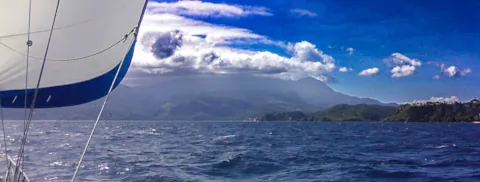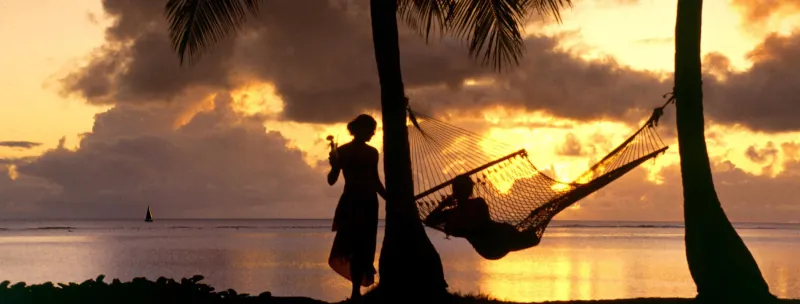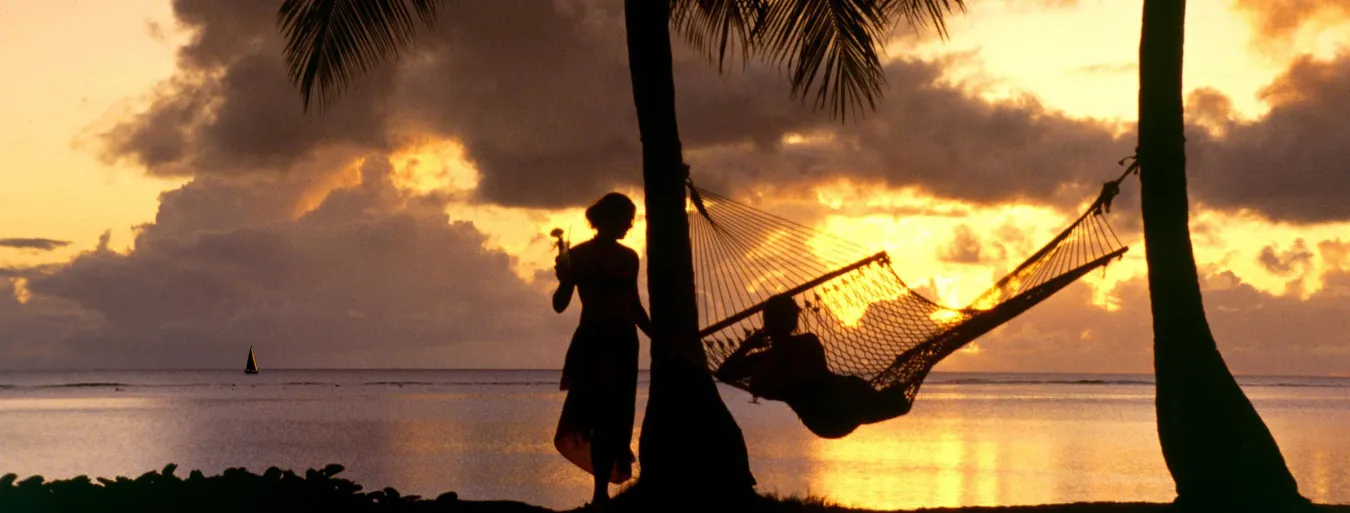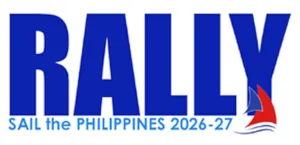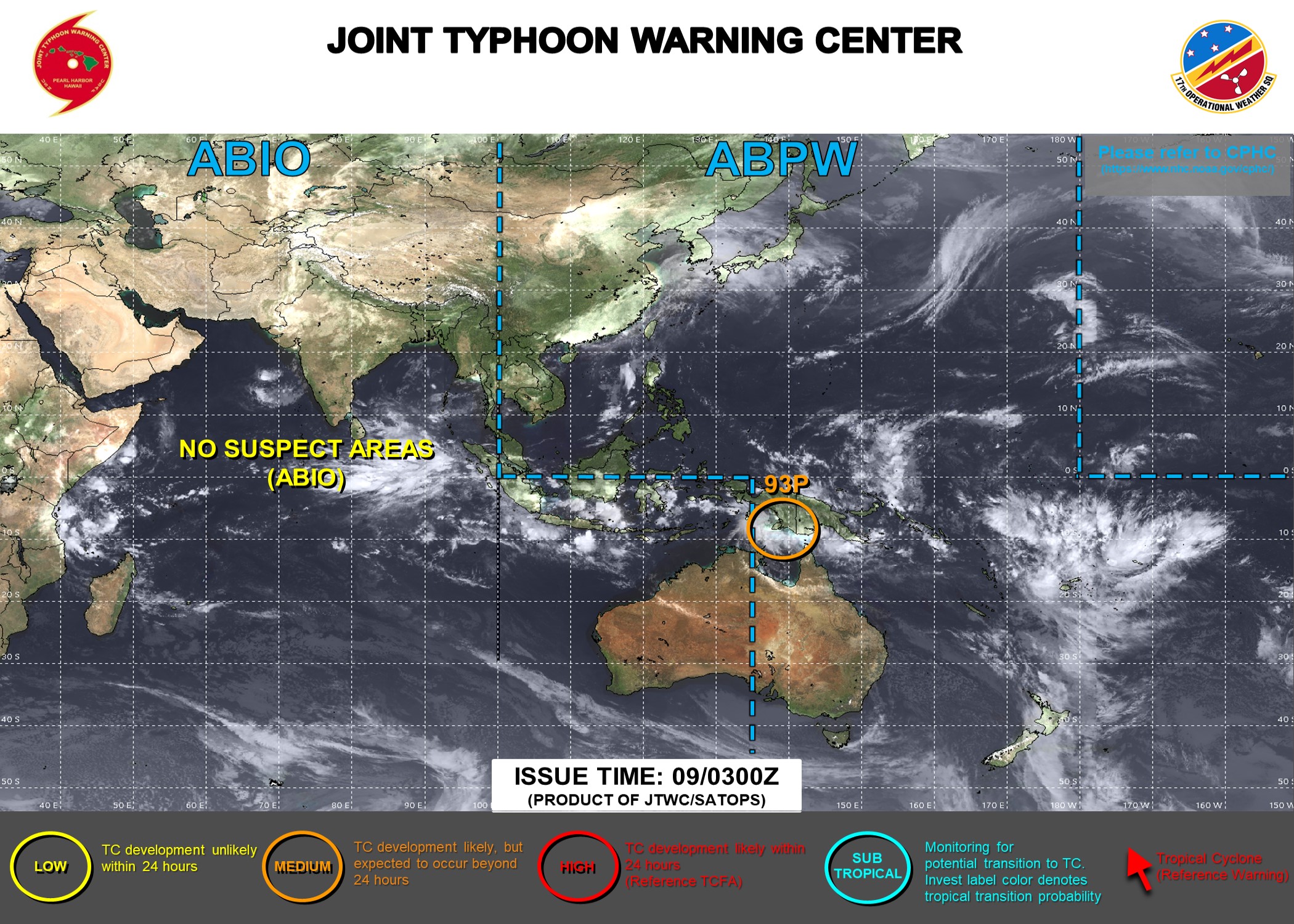When is a Good Time to Sail in The Philippines?
Sailing in the Philippines is good all year round, but some places are better than others at certain times of the year as seasonal variations in wind direction can make conditions more enjoyable. The one factor that may interrupt your sailing enjoyment in the Philippines is the approach of a tropical storm.
If or when a tropical storm may affect the Philippines then the red-triangle icon at the top of every page of this website will appear to flash; the flashing red-triangle icon will link you directly to the storm warning page for the latest information.
Check out the current weather affecting the Philippines and plan your sailing adventure here . . .
Philippine Weather Now
Sailing Weather Philippines
The Philippines has two primary seasons: the northeast monsoon (locally: amihan); and, the southwest monsoon (locally: habagat). These two monsoon seasons bring noticeably different weather to most of the Philippines, partly because the general wind direction changes through 180 degrees and partly because of the different moisture content.
Northeast Monsoon / Amihan
The northeast monsoon usually affects the Philippines from mid-October through to the beginning of May. The main characteristics of the northeast monsoon are light to moderate breezes with low moisture, meaning good sailing weather with less likelihood of prolonged periods of rain. Also, the breezes tend to be lighter at night and stronger during daytime.
Traditionally, the northeast monsoon starts as the North of the country comes under the influence of the development of a significant high-pressure system over China and the northwest Pacific Ocean in early October. The influence progresses southward over a period of about four weeks and usually reaches as far South as northern Mindanao.
The northeast monsoon, because its origins are mostly over land, is generally low in moisture content and, apart from localized rain patches and a few thunderstorms, offers almost six months of reasonably dry sailing weather. Additionally, the skies are clearer allowing more direct sunlight, so air temperatures may reach into the mid-30°s (Centigrade), or mid-90°s (Fahrenheit). Application of sunblock, especially "reef-safe sunblock", to exposed parts of your body is highly recommended while sailing during the northeast monsoon.
Southwest Monsoon / Habagat
The southwest monsoon usually affects the Philippines from mid-May through to the beginning of October. The main characteristics of the southwest monsoon are moderate to strong breezes with elevated moisture, meaning sometimes exciting sailing weather with a good chance of prolonged periods of rain. Also, the daytime breezes are more likely to perpetuate throughout the night.
The southwest monsoon is usually felt first in the southwest of the Philippines, from Palawan westwards and North, as the influence of the northeast monsoon weakens. The origins of the southwest monsoon are mostly over the South China Sea and the West Philippine Sea so the levels of moisture are generally higher than during the northeast monsoon. You will also notice that, because there is usually more cloud cover, the air temperatures are generally lower by perhaps 5°s (Centigrade), or 9°s (Fahrenheit), compared to during the northeast monsoon.
The only time you should not sail in the Philippines is when there is an approaching tropical storm that is forecast to pass within 100 miles of your location.
Typhoons & Tropical Storms
Once a tropical storm in the West Pacific reaches a forecast peripheral wind-speed in excess 65knts it officially becomes a "Typhoon" (a.k.a. "Hurricane" in the Atlantic and Central & East Pacific or "Cyclone" in the South Pacific & Indian Oceans). A typhoon becomes a "Super Typhoon" when the forecast rotational wind-speed exceeds 120mph (100knots, 150Km/hr).
Typhoons form over warm water and so the sea surface temperature (typically 29°C-31°C) is a key factor that influences their development. Other upper-atmospheric factors also affect the formation and intensity of a typhoon, and these factors are measured by satellite, aircraft and ocean monitoring stations. Most countries in the West Pacific have their own forecasting algorithms to predict the track and intensity of a typhoon, but most sailors will first turn to the US based Joint Typhoon Warning Center ("JTWC") to monitor the development, and predicted track of a typhoon.
Click here for latest tropical storm and typhoon activity in the West Pacific that may affect your sailing pleasure this week.
Typhoon Season
The "typhoon season" in the West Pacific is typically coincident with the period of the southwest monsoon (May to October) but tropical storm and typhoons occasionally form at other times of the year.
Typhoons that form over the Pacific Ocean during the early part of the typhoon season typically track northwest then North, and do not make landfall in the Philippines - heading instead for Taiwan or Japan. As the typhoon season progresses each year the storms come closer to the Philippines and may make landfall along the East coast of Luzon, some will cross Luzon and continue West to China and Vietnam. Closer to the end of the typhoon season you may see the storms making landfall on the East coast of the Central Philippines and cross numerous islands, slowly diminishing in strength, before exiting into the West Philippine Sea . . . once over the West Philippine Sea they may occasionally gather strength again as they enter the South China Sea and turn northwest and North towards Vietnam and southern China. As a general rule (based on 40 years of observation) typhoons that from during the latter part of the typhoon season are usually strongest and may make first landfall as far South as the East coast of Mindanao - the provinces of Surigao del Norte and Surigao del Sur have been occasionally hit by Super Typhoons in November and into early December.
Whether on land or on the water, if a tropical storm is approaching your location you should make preparations. Click here to review how to prepare for a typhoon.
Tidal Flows
As a general rule the Philippines is not affected greatly by tidal flows as the difference between high and low tide is almost always less than two (<2) meters in these tropical latitudes. However, there are a few exceptions to this rule which may affect you depending upon location.
Tidal Flow Through Straits
The Philippines is effectively a 1,000-mile long barrier to the movement of water around the globe. Within that 1,000 miles there are two locations where water can pass freely (to the North of Luzon and to the South of Mindanao) and two locations that force water through narrow gaps and will increase the flow-rate. The two narrow gaps are the San Bernardino Strait (between southern Luzon and northern Samar) and the Surigao Strait (between southern Leyte and northern Mindanao). Tidal flows in excess of six (6) knots have been known in parts of both straits, so it is advisable to plan ahead if you plan to sail these straits.
National nautical resources are not very informative and local knowledge was once the only way to obtain accurate information. In the 21st century however, with the advent of online services, you can obtain fairly accurate tidal flow information by using windy.com and predictwind.com, both offer Tidal Flow calculations that are accurate for time of day; windy.com is reportedly best in most locations for the most accurate prediction of speed of tidal flow.
Other locations, where there are relatively narrow passages between islands, can also offer localized challenges of a few knots, e.g. the Verde Island Passage and the Balabac Strait; the online services mentioned above will give you the best guide to navigate them safely.
Beach Launch Access
There are some beach locations that have a very shallow incline, where you may wish to launch or retrieve a dinghy, centerboard or lifting keel boat, and the distance from high-water mark to the water near low-tide is more than just a few meters. In these locations, even with the relatively small tide range, the challenge of lugging the boat across ten of meters, or more, of sand may be seen as a barrier to sailing pleasure. If you want to enjoy sailing in these locations then you should invest in a low-profile boat trailer for maximum pleasure.
Tsunami & Earthquakes
A tsunami occurs when a significant earthquake occurs below a body of water and where the associated movement of the seabed is near vertical and rapid. A tsunami of sufficient initial size can travel thousands of miles and will only dissipate completely when it encounters land.
The Philippines is literally surrounded by geologic fault lines, where earthquakes regularly occur, with some that cut cross islands, e.g. the "Marikina Valley Fault" that runs North-South through central Luzon and the eastern portion of Metro Manila. As a result, tsunamis occasionally occur and affect low-lying areas of island coasts. The Philippines may even be affected by tsunamis that originate with earthquakes in other areas of the Pacific Ocean (a reported six-inch tsunami wave arrived from Japan, March 2011).
On the rare occasions when an earthquake does occur that generates a tsunami within the Philippines archipelago the effects are usually minor, but they can be catastrophic if the associated hydrology supports rapid intensification of the tsunami wave (Verde Island Passage tsunami, November, 1994).
Earthquakes are impossible to predict and the calculation that any particular earthquake will create a tsunami is even more challenging. The Philippine Institute of Volcanology and Seismology ("PHIVOLCS") issues tsunami warnings related to actual earthquakes that it perceives may offer the threat of tsunami, but most frequently the warnings are quickly withdrawn without a tsunami actually occurring.
Will a tsunami affect your enjoyment of sailing in the Philippines? It is probably more likely that you will win a lottery than be directly affected by a tsunami while sailing in the Philippines.
Please watch this website for tsunami and all weather warnings and updates.
